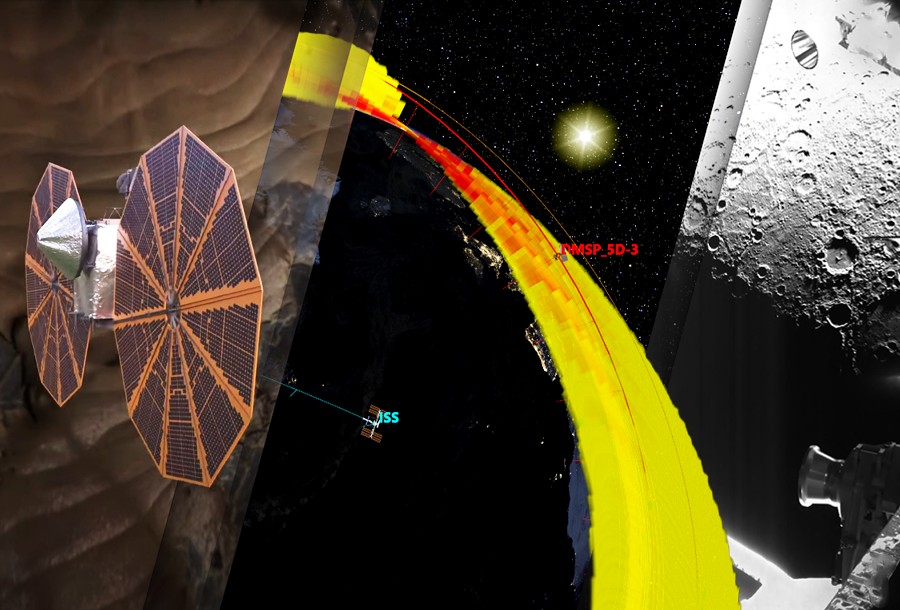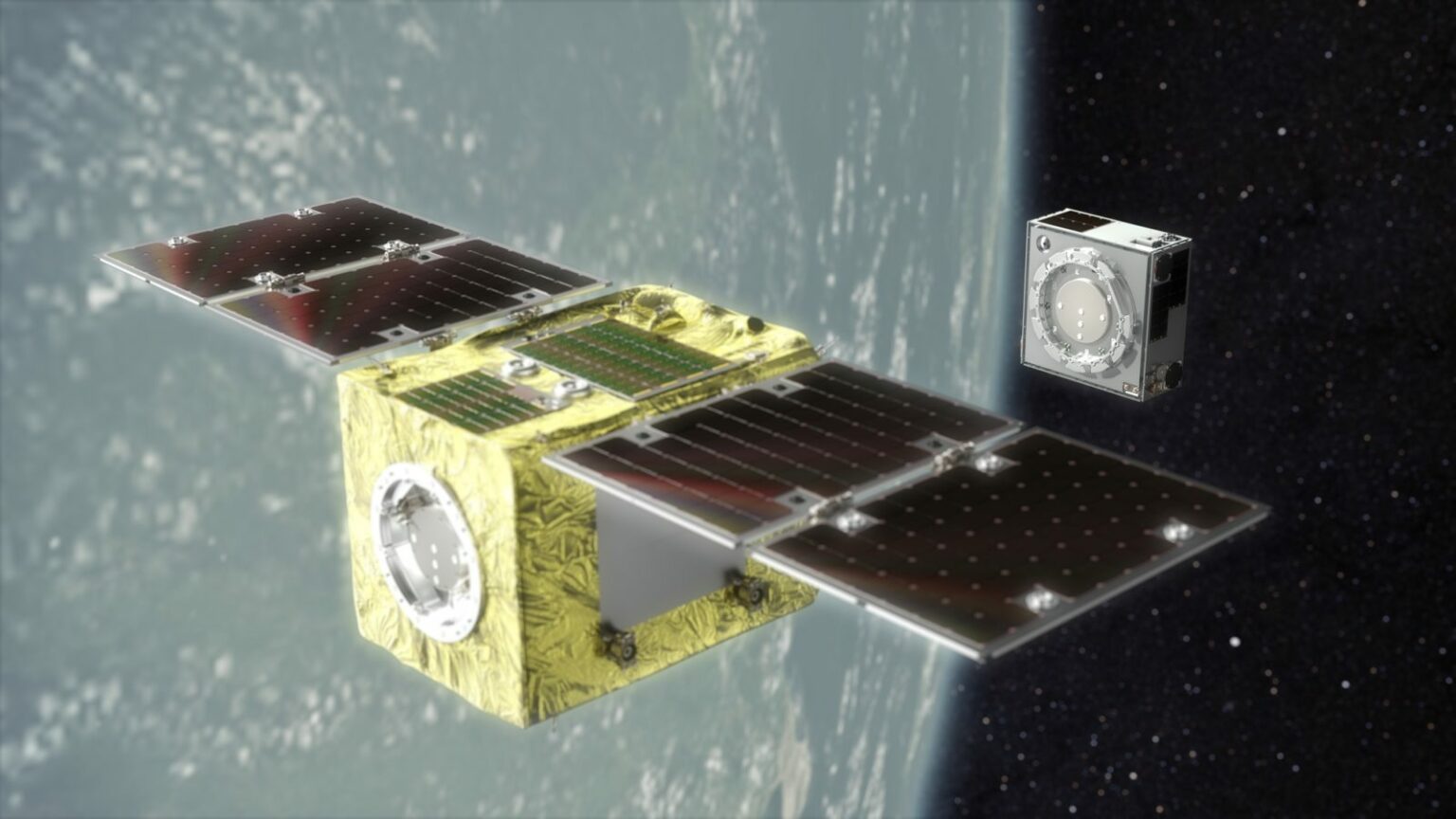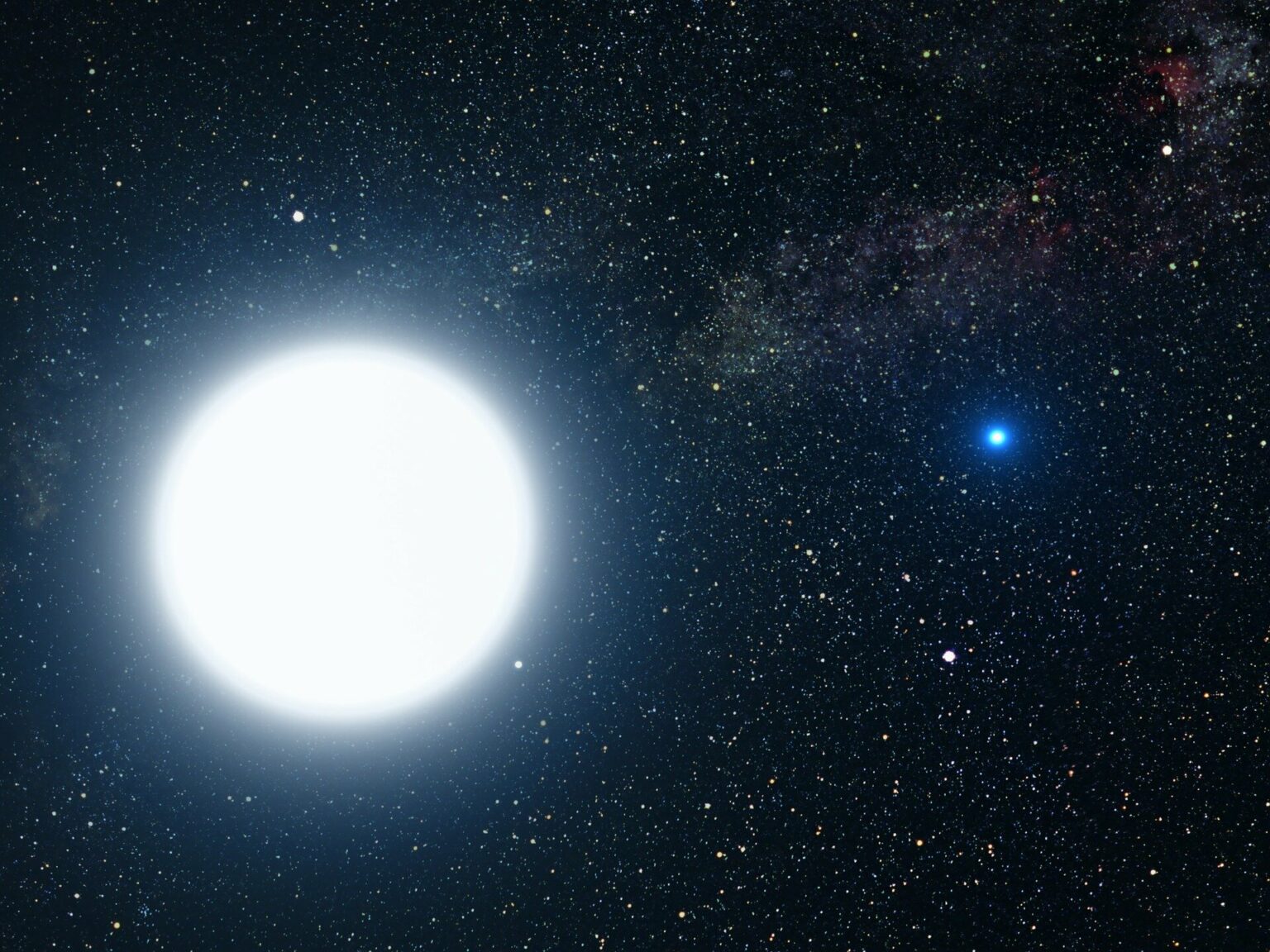Selection of the most interesting space news for breakfast: Beijing will deliver Martian samples to Earth two years ahead of the joint NASA and ESA mission. American and Chinese satellites are trying to follow each other in orbit, and scientists have explained how a new type of white dwarfs are formed.

ISS had to dodge Russian garbage again
The debris formed after Russia exploded its satellite in November last year almost collided with the ISS. Despite the fact that the aggressor country declared the safety of these tests, this time it was they who had to turn on the engines to avoid debris.
The International Space Station (ISS) had to turn on the engines of the Russian Progress-81 cargo spacecraft. This was done to prevent a collision with the debris of the Kosmos-1408 satellite, which the Russian Aerospace Forces themselves blew up in November 2021.
NASA’s Lucy mission adds 9th asteroid to its list of attractions
NASA’s Lucy probe has gained a ninth asteroid destination for its 12-year mission. The asteroid still doesn’t have a name. Lucy launched in October 2021 and is bound for the Trojan asteroids, which, thanks to the pull of Jupiter’s immense gravity, ride in the gas giant’s orbit ahead of and behind the behemoth. In 2027, Lucy will become the first human-made object to fly past one of these asteroids.
BepiColombo lines up for second Mercury flyby
The ESA/JAXA BepiColombo mission is gearing up for its second close flyby of Mercury on 23 June. ESA’s spacecraft operation team is guiding BepiColombo through six gravity assists of the planet before entering orbit around it in 2025.
The primary purpose of the flyby is to use the planet’s gravity to fine-tune BepiColombo’s trajectory. Having been launched into space on an Ariane 5 from Europe’s Spaceport in Kourou in October 2018, BepiColombo is making use of nine planetary flybys: one at Earth, two at Venus, and six at Mercury, together with the spacecraft’s solar electric propulsion system, to help steer into Mercury orbit against the enormous gravitational pull of our Sun.
Market News

Astroscale to launch space-junk-removing test mission in 2024
The space cleanup company is partnering with OneWeb, which is putting a broadband satellite fleet into space. Fresh off an attempt last month at catching a simulated piece of debris in orbit, Astroscale says it’s ready to launch a ‘space junk servicer’ test in late 2024.
The European Space Agency (ESA) and the U.K. Space Agency provided €14.8 million ($15.9 million) in financial support for the mission.
Speedcast plotting major satellite capacity expansion
Remote communications provider Speedcast is preparing to buy another sizable chunk of satellite capacity as demand soars beyond pre-pandemic levels.
Speedcast added 13 gigabits per second (Gbps) of capacity from satellite operators to its international network in late May, giving it a record 30 Gbps of bandwidth to primarily serve cruise and energy markets.
Space Force to establish intelligence unit at Wright-Patterson Air Force Base
The U.S. Space Force plans to formally establish the National Space Intelligence Center at Wright-Patterson Air Force Base, Ohio.
The NSIC will be run by a new Space Force unit, Space Delta 18, responsible for analyzing foreign threats to the United States in the space domain. The space intelligence center will be co-located with the National Air and Space Intelligence Center.
The center will be formed by transferring NASIC’s Space Analysis Squadron and Counter-Space Analysis Squadron to the Space Force. Col. Marqus Randall will serve as commander of the NISC.
House Armed Services bill proposes to increase funding for rapid space launch activities
House Armed Services Committee Chairman Rep. Adam Smith (D-Wash.) in the 2023 National Defense Authorization Act proposes adding $75 million to the Pentagon’s budget for “tactically responsive space,” a program that funds small-satellite launch experiments and demonstrations.
Interesting

How white dwarfs of new type are formed
White dwarfs can be helium, carbon-oxygen or supermassive oxygen-neon. However, scientists have come to the conclusion about the possibility of the existence of supermassive dwarfs of another type and explained how they are formed. Scientists have suggested that a new type of stellar remains may be formed by the fusion of an ordinary carbon-carbon dwarf with helium. They built a model of this process. It turned out that everything can happen very quickly. At the same time, a hot helium corona forms on the surface of the object.
American and Chinese satellites set up orbital “cat and mouse”
Shortly after the release of a pair of Chinese satellites into geostationary orbit, the American device — inspector USA 270 made a course correction that sent it to meet with new neighbors. In turn, the Chinese satellites carried out a counter-maneuver.
For some time, USA-270 was approaching a pair of Chinese satellites. Then, according to COMSPOC Corp., which is engaged in tracking near-Earth space, they performed a counter-maneuver, going in different directions. “Shiyan-12-02” at the same time took a position between the Sun and USA 270. Thus, it got the opportunity to observe the illuminated side of the American intelligence officer and complicated the task of tracking itself. It is not yet known whether USA 270 will undertake any retaliatory maneuvers.
China aims to bring Mars samples to Earth 2 years before NASA, ESA mission
China’s Mars sample return mission aims to collect samples from the Red Planet and deliver them to Earth in 2031, or two years ahead of a NASA and ESA joint mission.
Sun Zezhou, chief designer of the Tianwen-1 Mars orbiter and rover mission, presented a new mission profile for China’s Mars sample return during a June 20 presentation in which he outlined plans for a two-launch profile, lifting off in late 2028 and delivering samples to Earth in July 2031.
Follow us on Twitter to get the most interesting space news in time
https://twitter.com/ust_magazine

